This guide is for those of you who have no idea about tents, it is also for the people who want to learn a little more about them, even if you’re already an expert in the camping field – it is a never a bad idea to learn 1 or 2 things you didn’t know before 🙂 We’ve also come back to retouch this article with some new insights since we originally wrote it a few years ago.
I want you to learn the basics about them before you embark on your journey to finding the best tent.
I want you to become knowledgeable on tents, BEFORE you go out and purchase one without knowing how to take care of it or thinking you can pitch it anywhere you want.
If you want to skip all of this, you can still click the link below for my personal recommendation, or read on to be the outdoor expert everyone can look up to!
Spoiler Alert – See My Favorite Tent Here
In this article I will be covering:
- The most common tent types
- The different tent sizes
- How to choose a tent
- Where to pitch a tent
- How to take care for your tent (protect your tent from getting future damage or wear and tear)
If that sounds like something you’re interested in, then I suggest you keep reading.
Stay tuned in and grab a cup of coffee, because you are about to get a crash course lesson about TENTS.
Enjoy!
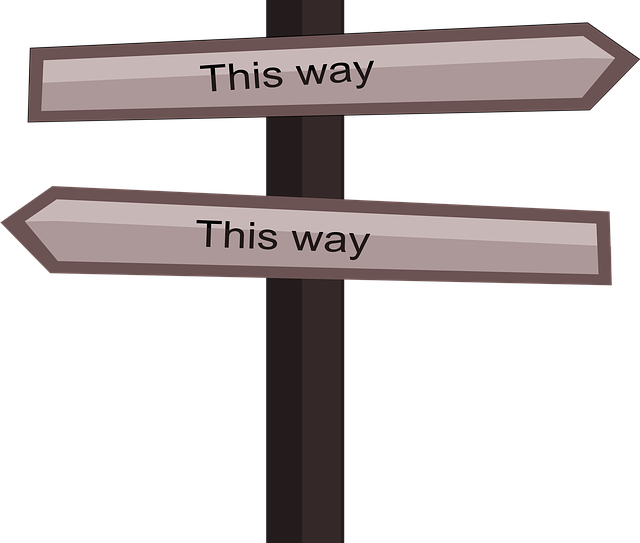
1. Most Common Tent Types
There are a lot of different tent shapes you can get on the market.
Each have their own pros and cons, some of them work better in rough winds, and another type will function differently in wet-weather conditions.
Pop Up Tent
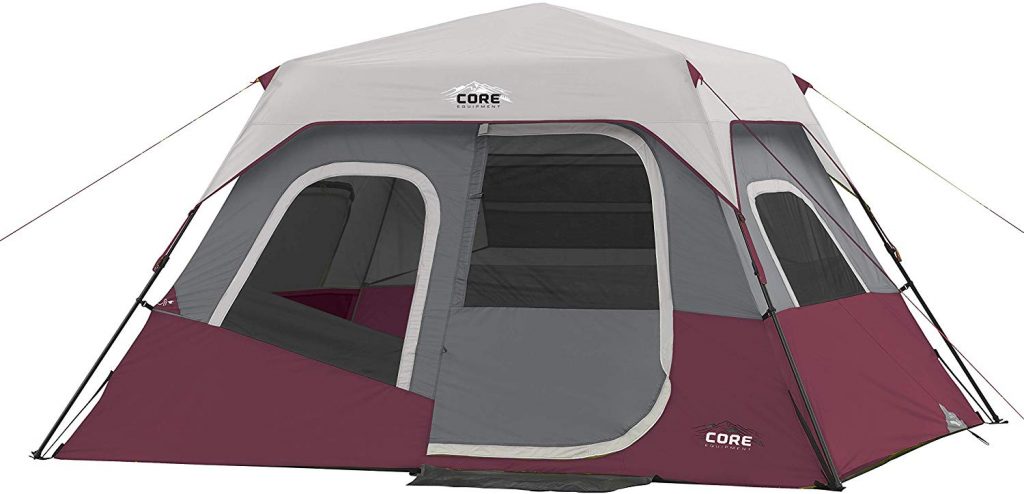
Pop up tents are usually more expensive than dome tents, however they are a lot faster and easier to pitch.
But due to the ease-of-use, it exposes weaknesses. Pop up tents are heavier than other tents and not created for extreme weather camping.
Winds gusts head straight toward the tent, putting a lot the stress to the sides of them.
And because pop up tents require internal springs and poles, if something goes wrong in the wilderness (with JUST you and your family there and minimal tools) you are going to be in a very difficult position and may need to cut your trip short.
That doesn’t mean all pop up tents will break in the first wind gust though, but just remember to consider the reason I have mentioned above for all future trips.
These tents aren’t recommended if you are expecting huge storms, but most of them CAN handle moderate wind conditions.
Dome
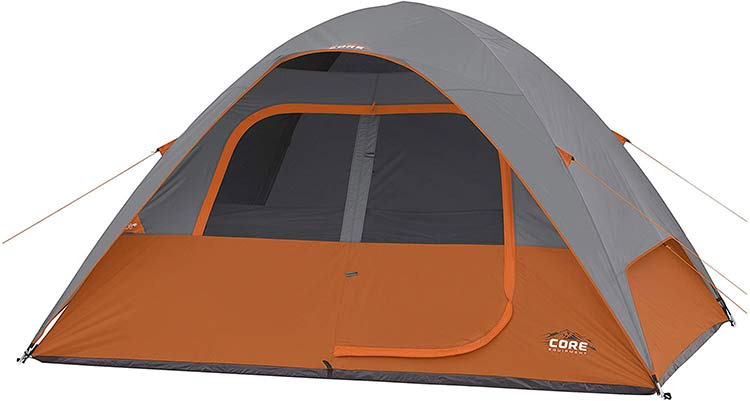
Dome tents are the most popular for family and group campers.
Some of them have room dividers and spacious living areas, like a porch area to store your equipment, gear and even motorcycles! These types of tents are usually the best for when you want to pitch in snow.
These work very well against strong winds but it all depends on how high the tent is sitting. The lower the dome the better it is against the wind.
You can combat the winds by pitching it in sheltered spots anyway.
If you have more guy ropes, the stress heads more towards the ropes and NOT the tent. And depending on how well the tent is taught and pitched correctly, a small amount of wind can be channeled down to the ground – to the pegs.
Now if something breaks on a dome tent due to high winds (where most of the time it is the guy lines since they take most of the force), it will be much easier to fix.
You can get usually get these fixed with a short piece of Paracord and a good knot, and will only take about 10 minutes with some knowledge.
See The Dome-Shaped Coleman Naugatuck Tent
A-shaped
These tents don’t work as well as the others mentioned against strong winds.
They also tend to be a little heavier than dome tents since (most of the time) a tarp is needed for extra protection against the rain.
But if you don’t need the tarp, they are fairly lightweight.
They aren’t very spacious on the inside either, and that’s because they are sloped on the sides, a good reason why they have lost their popularity over the years.
The A-shaped tent is only good for shelter, and with the rising popularity of family campers, the amount of people using these tents have really gone down – due to the limited amount of room it provides.
That said, there is still a good number of people using these tents. Most of them are lightweight backpackers.
2. The Different Tent Sizes – Understanding The Confusion
You need to remember something here, a tent’s size is based on how many people can sleep in it.
Pretty much EVERY single tent on this planet is wrongly measured. Well not exactly, but you’ll know what I mean in a second.
If a tent is designed for 2 people, it means that 2 people can sleep in it without any gear, just a sleeping bag
You’re more than likely going to be touching too.
However you don’t need me to tell you that when you go camping there is gear and equipment that needs to be considered.
I recommend moving up at least 1 size if you want a little extra space. Go up 2 sizes if you want a lot of extra room.
For example: A tent that is designed for 4 people will fit 2 people and some gear and enough space to sleep comfortably. If you want to fit exactly 4 people inside the tent, you better be comfortable with everyone.
Because you’ll be touching and you won’t have any space for your gear.
Of course if you are camping with one other person you can always share a sleeping bag.
Can you see the trend here?
A rule of thumb: Move up 1 size to allow extra room for your equipment, or move up 2 sizes to get extra room for your equipment AND it will allow more space between you and the person next to you.
This applies to all other tent sizes as well – 3, 5, 6, 8 etc.
3. How to Choose a Tent
Now you have a general idea about the common tents that are being used, all around the world, right at this moment.
And you now know exactly why the tents are measured the way they are and why every single tent you buy you never really have as much room as you thought you would have, we can now get into how you can choose a tent.
What Are You Using The Tent For?
Are you going camping with a group of friends, are you planning on car camping in extreme weather conditions, or maybe you just want to camp with your motorcycle?
There are a lot of considerations that you need to keep in mind as you are purchasing a tent. This article goes into full detail and explains everything you need to know as you choose one.
4. Where To Pitch A Tent
Pitching your tent anywhere in the campsite is a recipe for disaster, especially if a flash flood hits you during the night.
To avoid any early morning surprises (where you could wake up at 1 a.m with your tent filled with rain water), you need to follow the placement tips and considerations I will outline below.
On A Hill
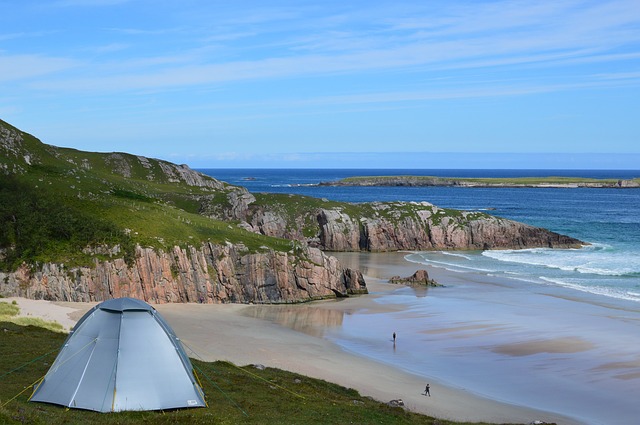
Many people will recommend pitching a tent on flat ground. I beg to differ, you’re more likely to avoid a flash flood by pitching your tent on a hill.
This can either be at the top of a hill or on a slope (of course with your feet facing downhill and your head positioned uphill).
Do not make the rookie mistake of lying sideways along the slope, you risk rolling over and pressing up against the tents material, where you can wake up soaked from condensation.
This Does Not Mean In A Valley!
Don’t confuse hill with a bank, ravine, ditch, or valley.
Because you WILL wake up with your tent filled with water if you pitch your tent in these areas. Even though these low-lying areas will keep you safe from the wind and sun, it is generally a bad idea.
Consider The Sun Exposure
What you are aiming for is to position your tent to get the morning sun, and to stay out of the afternoon/evening sun.
With your tent being exposed to the sun all day, your tent can face premature aging, meaning you will get less value for your money.
Not to mention that your tent will become sauna-like, which is something you don’t want.
Consider The Wind Exposure
Just like the sun, you need to keep the winds strong gusts in mind.
Position your tent so the door is facing AWAY from the wind.
I don’t know how many times I’ve seen people make the simple mistake of facing the tents door in the wind, this only stops them from getting a good nights sleep as the wind flaps the tent all night long.
By facing your door away from the wind, you can stop the cold air entering your tent that the wind sends through the zippers.
Near Water Or Far Away From Water?
This is a common question and a good rule of thumb to follow is: Keep your camp site close, but not too close – 100 feet or more is a good measurement.
If you’re too close you face the risk of experiencing a deadly flash floor, you can also contaminate your water supplies.
So stay close enough to have an extra source of water if something happens to your current water source, and far enough so you don’t end up in a midnight flash flood!
Do Not Pitch Near Dead/Rotten Trees
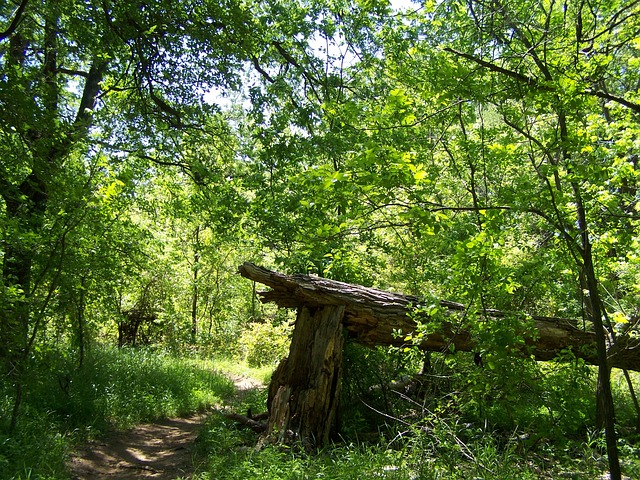
This one is pretty common sense really, however I will still mention it because this is a tent guide for newbies of course 🙂
To avoid dying in the middle of the night (worst case scenario), it would be in your best interest to pitch your tent well-away from rotten trees.
If not, one of them could fall on you during the night.
Pitch Under A Healthy Tree
The key here is HEALTHY. You don’t always have to do this but it will work in your favor.
The tree can stop light rain from hitting your tent and can also help with the wind problem. Trees are good windbreakers and completely free from Mother Nature too 😛 Take advantage of this.
Camping In Snow
Camping in the snow is very different to camping in a forest or campground. Here’s why: If you’re camping in snow, you want to stay AWAY from trees – rotten or not.
This is because heavy snow loads can drop off onto your tent as it melts or when the wind blows it off.
If you’re in the wilderness, you’d also want to avoid banks or slopes, these can and will avalanche.
Pitch your tent on a flat surface (only if you’re camping in snow), but before you do this you will need to stomp the snow down to create a firm base.
Don’t Overlook Your Tent Placement!
I know there’s a lot of important considerations and many factors to keep in mind.
However, this differentiates the knowledgeable, happy campers (the ones who know how to stay safe and have fun doing it), from the bad campers (the ones that pitch their tent anywhere – without a care in the world, while risking their own lives, along with everyone else around them – getting into some serious danger).
I know which one i want to be, yep you guessed it, the bad one! Just kidding. I am the happy, fun (knowledgeable) camper, and I want you to be the same.
5. Tent Care
We are almost at the end of this guide, you can either take a break or keep moving forward
I just want you to take care of your tent while you are out in the wild.
Because there’s no point in getting a tent if you’re just going to be reckless with it. You can get more value for your money simply by taking a little care of it.
These tips I will outline below will increase the longevity of your tent and help you on your way to become the outdoor expert you so-deserve to be.
Clear The Ground First
To ensure no sharp rock or stick is going to pierce through the floor of your brand new tent, you should always clear the ground where you’ll be pitching it.
Usually established campsites have already got vegetation removed, all you need to do now is sweep away twigs, pine cones, small rocks, etc.
Use A Footprint Cover
The bottom of your tent is called a footprint. To protect the footprint of your tent even more (rather than just sweeping away rocks and twigs), you can use a footprint cover.
Without one of these, the bottom of your tent starts getting abrasion quicker than usual. It also provides a cleaner pack up – which is a massive bonus.
Most tents have their footprint covers sold separately. However, there is a cheaper alternative you can use, it is a tarp.
If you decide to use a tarp though, make sure you tuck all excess material under your tent so it doesn’t catch rain water.
If you don’t tuck the tarp under your tent, the rain will eventually run down to the bottom of your tent and form a puddle right under your sleeping area.
Do not leave the tarp like this!
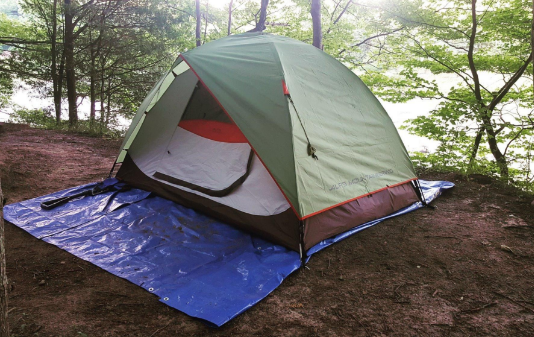
Don’t Leave Your Tent Sitting In The Sun
Many tents are destroyed by the suns UV rays.
UV ray damage is a common killer for tents, which is why I want you to reduce the amount of sun exposure as much as possible.
Morning sun is okay, but the afternoon sun is the worst. If you REALLY HAVE TO keep your tent sitting in the sun all day, you should leave the rain fly on.
The rain fly is much more resistant to the suns harsh UV rays.
Furthermore: Polyester rainflys have more UV ray resistance than nylon.
If you want to ensure the longevity of your tent, bring it out of the afternoon sun regardless of the rain fly material.
Be Careful With The Poles
Snapping poles into place as you whip it around is going to make you look cool, yes, I can agree with you on that one.
But it isn’t going to increase the longevity of your tent.
If anything, it’s only going to chip sections on your pole and weaken its use.
Just be careful with the poles and take your time. There’s really no need to whack your camping friend with it, lol.
Be Careful With Zippers
This is another tent killer, when zippers are broken the tent is pretty much dead, well… a pain to get fixed anyway.
Don’t force zippers, do not jerk them, you should focus on wiggling it side to side in the event it gets stuck.
You can also try holding the tracker with one hand and gently sliding it until it re-engages.
If you still can’t get it to connect, you can use a pair of pliers and squeeze the zippers together, then try connecting it again.
Leave Boots Outside
The last thing you want is a small rock or grit to land on the inside of your tent, only to be stepped on and the floor to be punctured!
Keep All Food And Fragrant Products Out
This is not only a good idea for keeping bears out, but the more smaller creatures can AND WILL chew through your tent just for that midnight snack.
Keep All Dogs Supervised
Unsupervised and untrained dogs are a recipe for disaster for any piece of equipment, even in the home.
It is only necessary to ensure all dogs are being watched, as their teeth and claws will do serious damage to your tent.
More: Tent Care Basics
Conclusion
I hope you enjoyed this guide.
There are literally hundreds of things you need to learn about tents, and in this crash course that I have provided, there is a great deal of knowledge that every outdoorsman should know.
These are the basics that you need to read and implement right now, BEFORE you even consider purchasing a tent and embarking on your journey.
If you read this entire post, then you can continue onto the next step, which is to see the best tent for family camping.
If you learned a thing or two in this article, please tell in the comment section below 🙂

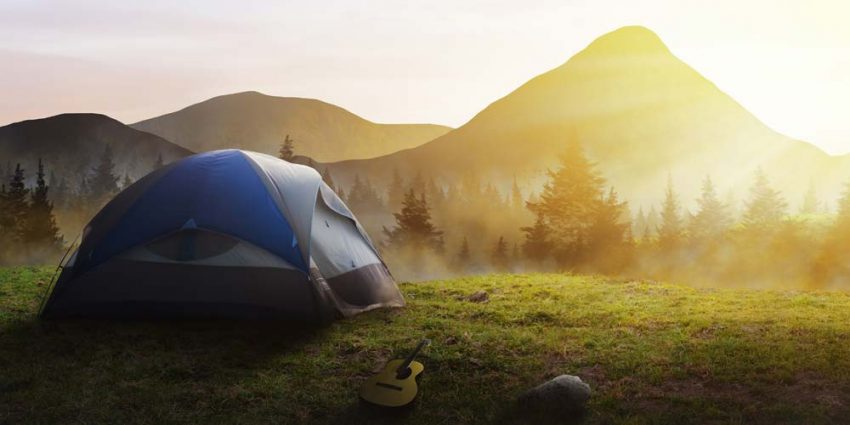
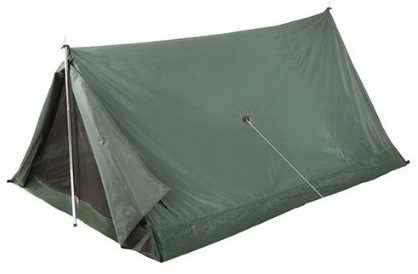
All the points you discussed are important but I would like to stress on the where to pitch your tent. I remember a time when I and the group of youth went to a place to have an exposure on what is happening in the watershed area of Luisiana, Laguna, Philippines.
It was not in my mind what would be the safest spot but for me, it’s enough to have it anywhere. However, the rotten tree picture reminds me that first and foremost is the security consideration for everyone. This may include a place where possible erosions will occur.
During that camp, it rained in the middle of the night and water crept under our backs, which sends the message that we lack the right preparation in setting up our tent. I’ll be reading it here in this site the next around I’ll be back.
Exactly my point with all of this, Jimmy. Pitching your tent wherever you please is not the best idea if you’re wanting to have a safe trip so you can make it home safely.
I’m glad you found out how to do it properly and I’ll be happy to see you around here more 🙂
Cheers and good luck!
This is a great website with alot of important information, I’ve been camping all my life, if we plan a float trip then we plan on camping too, and so forth just to be in nature is an awesome experience, but have respect for it too. And getting older it’s easier to do rv camping or hammock camping in my opinion. (but not nearly as fun) 🙂 thanks for all the useful information.
I plan to try out RV camping when I have enough money to do so. I’m not exactly rich or anything, which is why tent camping is my go-to holiday choice 🙂 It’s very cheap and very easy when you have done it for so long, while the benefits are incredible as well!
Nice pointers and interesting facts on tents. Where do you suggest going camping? Reviews of the best ones you’ve been to and the ones in your bucket list would be nice. Really liked the site in general. Keep the useful info coming.
I haven’t camped all around New Zealand just yet, but I have found one of my favorite spots to be Blumine Island.
However, I’ll definitely be going to the McKee Memorial Reserve some time since I haven’t been there yet 🙂